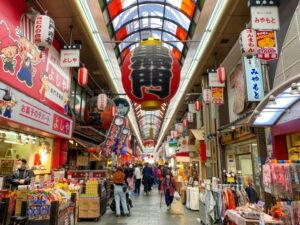What is a Machiya? Ways to enjoy Kyoto's Machiya
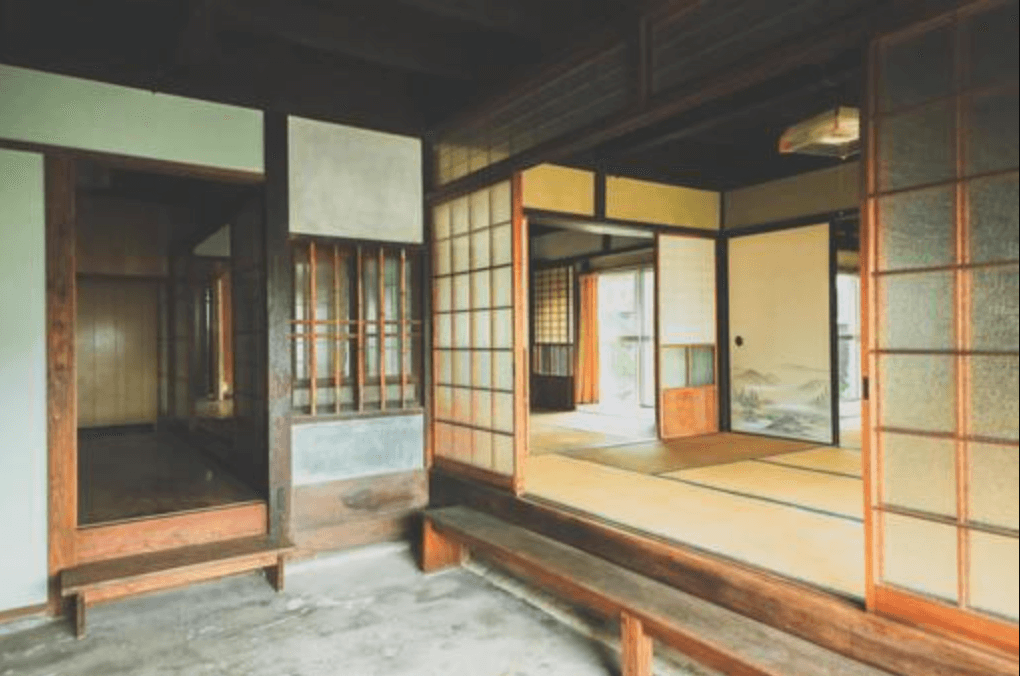
Learning about traditional Japanese "machiya" houses is the first step in understanding and enjoying Kyoto's culture.
Machiya embodies Japanese architectural beauty and philosophy of living.
Today, we will introduce the characteristics of such machiya and how to enjoy machiya in the modern age.
- A house that gives you a sense of Japanese history and culture, machiya
- What is a Kyo-machiya?
- Characteristics of machiya that was common in urban areas (Kyoto, Kanazawa, Kurashiki)
- The interior of a machiya is filled with the ancient culture of Japan
- History of machiya from the Heian period
- Machiya inns and machiya cafes: how to enjoy the rich charm of machiya
- Popular machiya inns and machiya cafes in Kyoto
1. What is a machiya, a house that gives you a sense of Japanese history and culture
Machiya generally refers to an urban residence that combines a store and a residence.
Machiya are often described as “eel beds” because of their narrow entrances and long, narrow structures.
Machiya are particularly popular as tourist attractions in cities such as Kyoto, Kanazawa, Kurashiki, and Kawagoe, where many machiya still exist.
Machiya houses, where people can live and work, are filled with the wisdom and culture of the people of the past.
The charm of machiya houses is not only can you look at them, but you can also enjoy them in various ways, such as entering them or lodging in them.
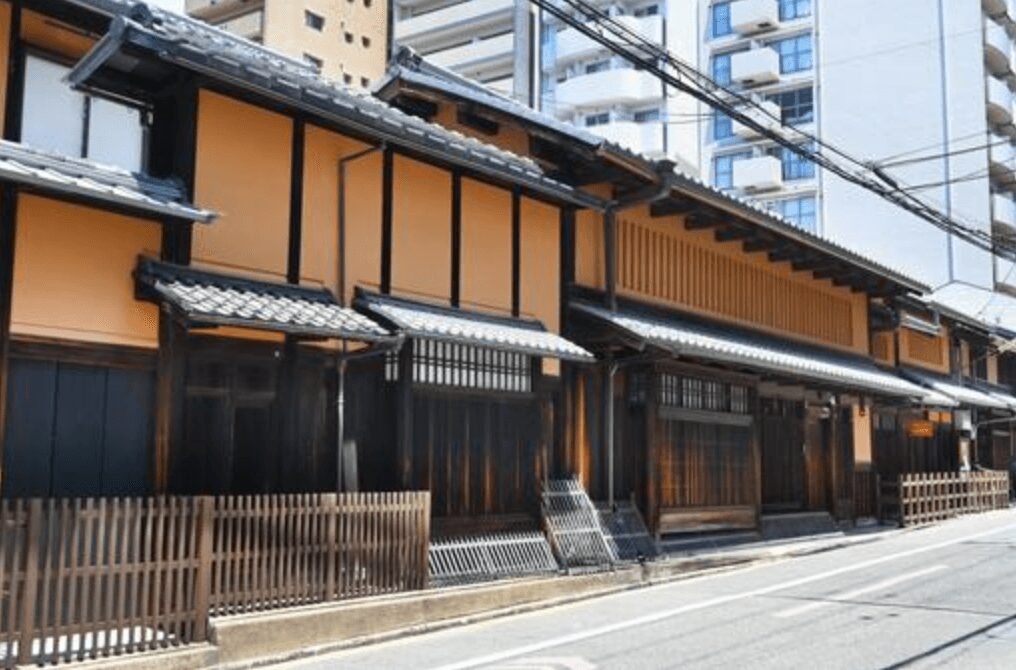
2. What is a Kyo-machiya?
One of the most popular machiya types is the Kyo-machiya.
Simply put, a machiya in Kyoto is a Kyo-machiya, but there are actually certain conditions that must be met in order for a house to be officially recognized as a Kyo-machiya.
According to the Kyomachiya Ordinance, a “Kyomachiya” is defined as a wooden structure built before 1950 and having a traditional structure and a form or design created in urban life.
For more information, please visit this comprehensive information website on Kyo-machiya by Kyoto city.
3. Characteristics of machiya that was common in urban areas (Kyoto, Kanazawa, Kurashiki)
The most distinctive feature of the machiya is the integration of the store and residence.
It is believed that many machiya with this form were built in urban areas such as Kyoto, Kanazawa, and Kurashiki in order to make effective use of small areas of land and to stimulate commerce.
It seems that commerce was closely linked to daily life and became a part of daily routine, helping to support the foundation of the local economy.
It also helped to solidify the cohesion of the local community, as shopping at the stores led directly to interaction with the neighborhood residents.
4. The interior of a machiya is filled with the ancient culture of Japan
Machiya houses have a variety of features that combine beauty and functionality.
Here are some of them.
Tsuboniwa
Inside each machiya is a small garden called tsuboniwa.
Visitors can relax and enjoy the beautiful scenery of the four seasons.
Because they have narrow entrances and are densely built, machiya houses suffer from poor ventilation and lack of sunlight.
However, these two problems can be solved by installing a ceilingless tsuboniwa inside the house.
The small tsuboniwa greatly enhances the beauty and comfortableness of machiya.
When staying in a machiya, perhaps have a look as to what kind of tsuboniwa it has.

Fusuma and Tatami
Each room is separated by fusuma (sliding doors) and has tatami mats on the floor.
Fusuma sliding doors are sometimes decorated with beautiful designs that match the role of the room and are pleasing to look at.
Furthermore, on festive occasions or when welcoming guests, the fusuma were removed to create a larger space.
Tatami is soft and have good insulation, making it suitable for people to relax and enjoy the elegant aroma of rush grass, so it has been used in Japanese houses as well as machiya houses.
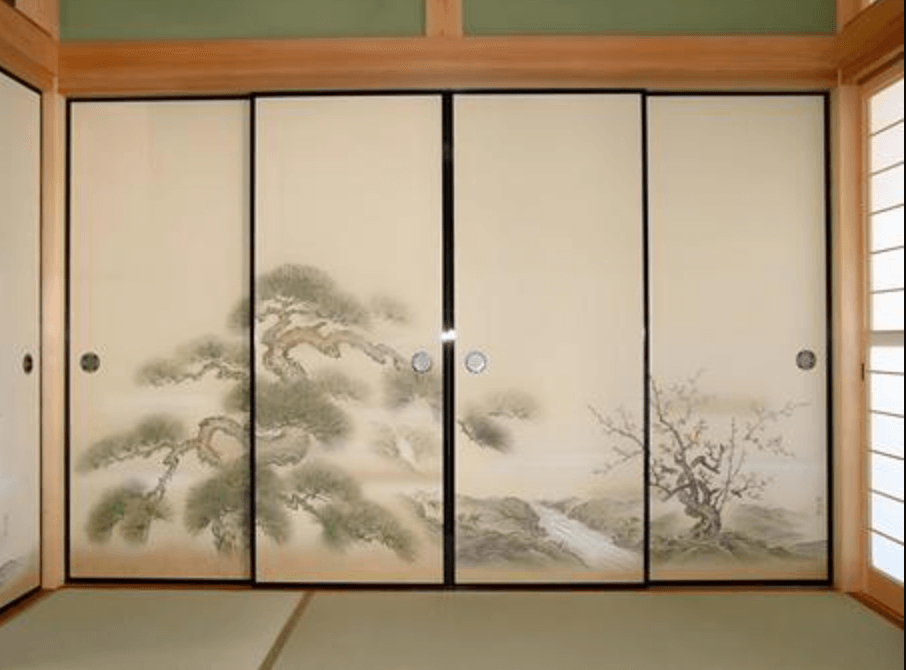
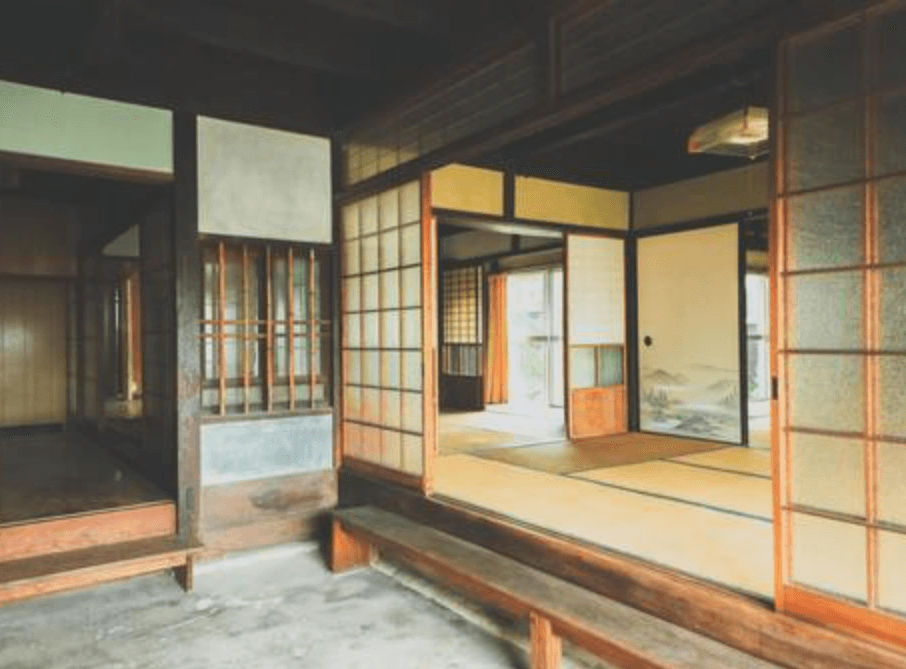
Hashira and Hari
One of the features of machiya is that the wooden pillars and beams are exposed, allowing the viewer to enjoy the beautiful structure.
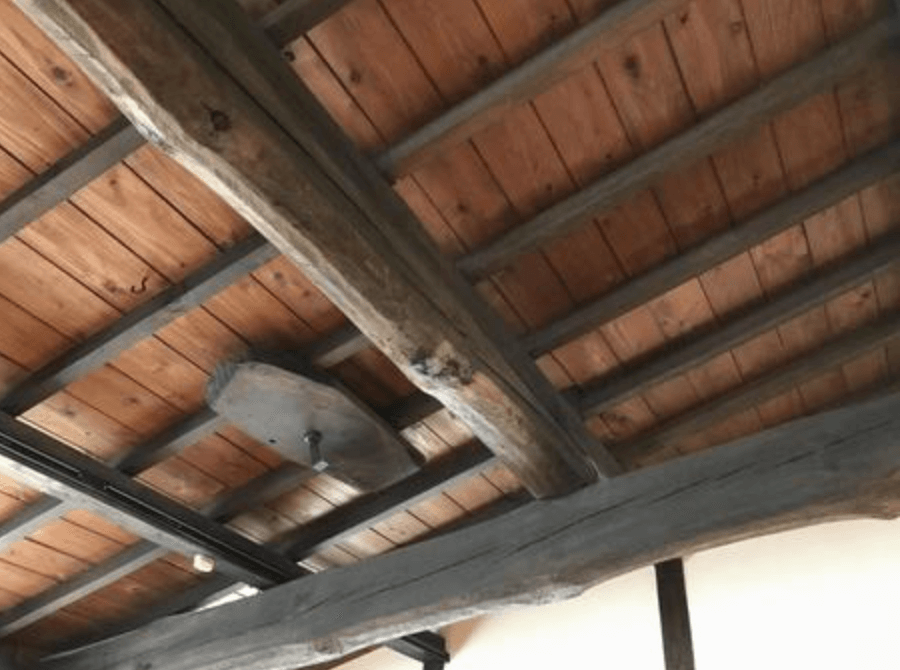
Shoki Statue
On the roofs of machiya houses in Kyoto and Nara, there are sometimes tile statues called “Shoki-san”
The motif is based on a legendary Chinese figure who is said to be stronger than an ogre, and is meant to ward off evil.
Try to find them when you visit Kyoto or Nara!
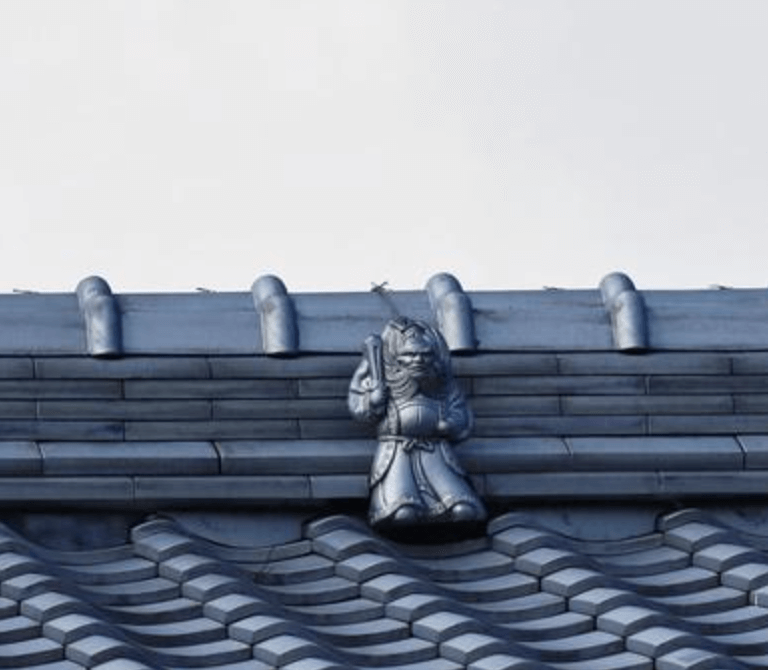
Inuyarai
"Inuyarai" are often seen on the exterior walls of Kyo-machiya houses, especially in the form of bamboo arches.
They are meant to protect against dog urine, but they also prevent damage to the exterior walls caused by mud splashed by horses and ox carts as they pass by.
There are many other features unique to machiya houses.
When you visit a machiya, have a look at the various designs.
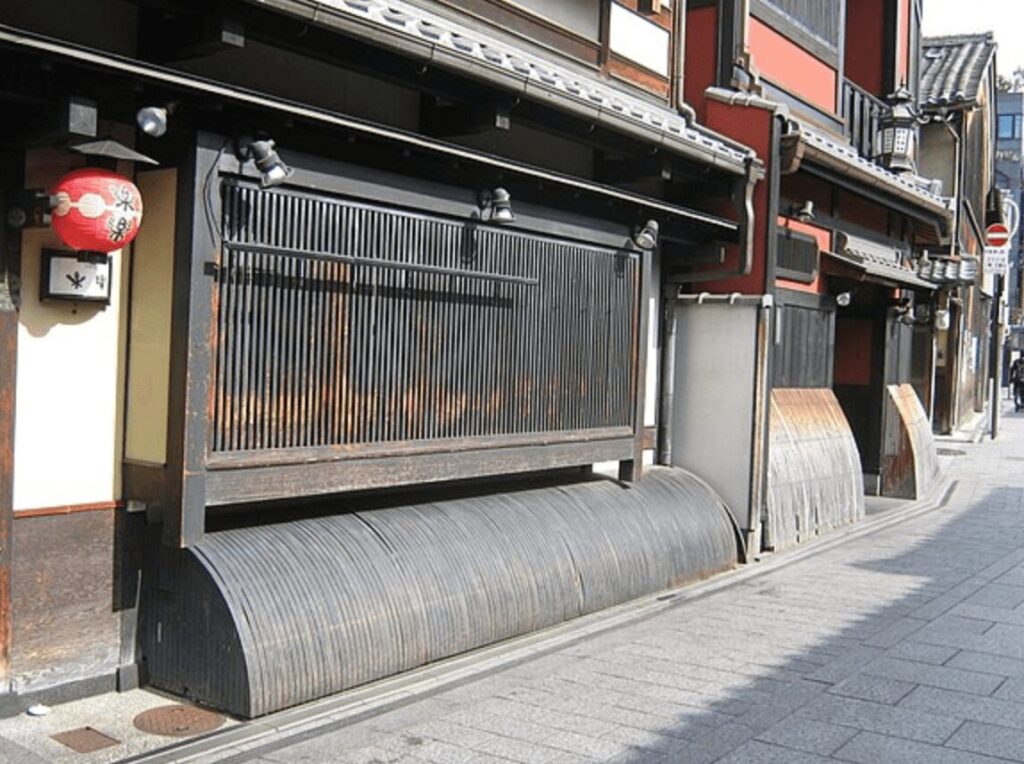
5. History of the machiya from the Heian period
The history of the machiya is long, dating back to the Heian period.
As urbanization progressed from the Heian period to the Edo period (1603-1868), the demand for commercial and residential use increased, and machiya houses developed in various ways to meet these needs.
Since the modern era, many machiya have been demolished or abandoned.
However, in Kyoto in particular, the historic townscape has been preserved, and machiya makes up a part of the landscape.
Below are photos of the remaining streetscapes in Kyoto, as well as photos of residential areas in Japan in general today.
Various efforts are being made to preserve the beauty of the streetscape in the future, while respecting culture and tradition.
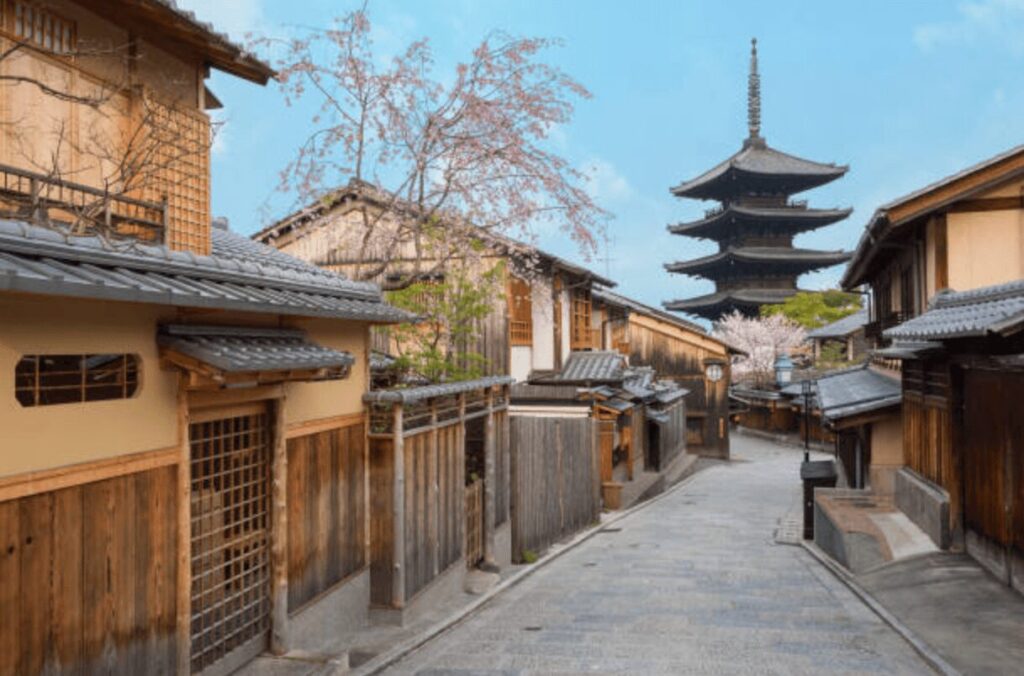
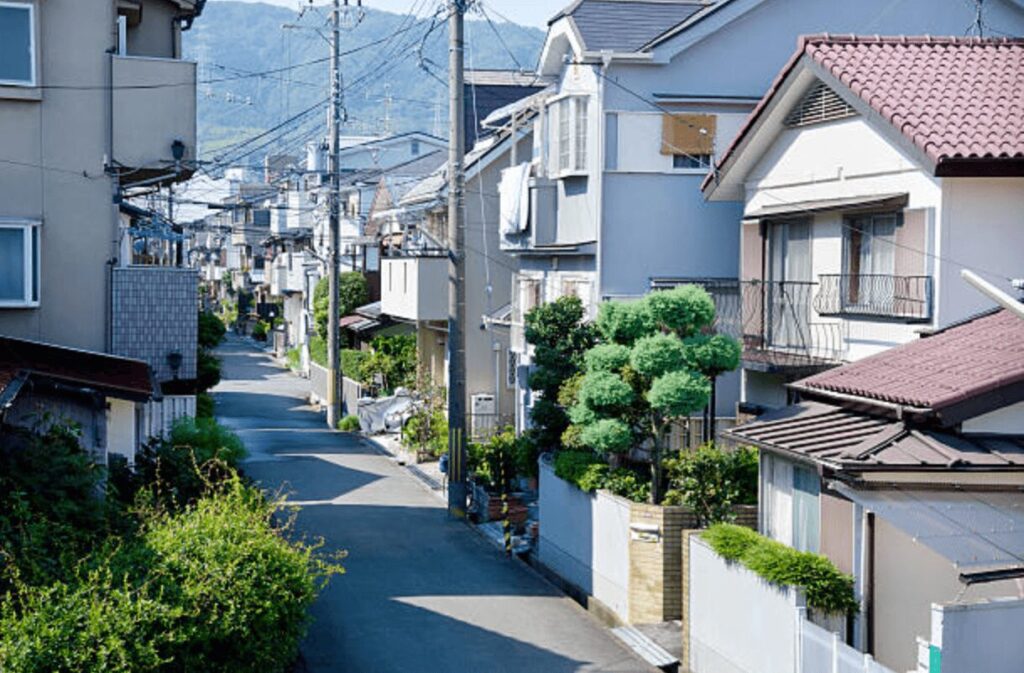
6. Machiya inns and machiya cafes: how to enjoy machiya with their rich charm
In modern Japan, some machiya are being preserved and reused.
They are being improved to make them more beautiful and livable, while retaining the unique decorations and atmosphere of the machiya.
In particular, an increasing number of cafes and lodging facilities are renovating machiya houses.
These machiya houses are gaining popularity as a place to relax and enjoy Japanese sweets and food in an atmosphere of a traditional townhouse.
In this way, the history and traditions of machiya are being passed on in new ways.
Some YouTube videos on machiya!
7. Popular machiya inns and machiya cafes in Kyoto
Finally, here are some popular machiya houses in Kyoto!
Please refer to them when sightseeing.
Machiya Residence Inn Kyoto
This is a machiya for rent in Kyoto City.
You can enjoy a machiya that has been renovated to be more comfortable while retaining its authenticity.
The main appeal is that you can choose your favorite machiya from more than 50 machiya.
Machiya Residence Inn Kyoto's Official Website
Kyoto Ichiken Machiya Sato-i Omiya Gojo Tetsusen
This is a renovated 150-year-old Kyoto machiya that can be rented as a single house.
Located in a quiet residential area, you will feel as if you are living in Kyoto.
The inn offers various meal plans as well as overnight stays with no meal.
Kyomachiya Tea House Sozen
The concept of this machiya café in Kamigyo-ku, Kyoto is “a café you can experience".
In addition to sweets such as parfait, baked ice cream, and frozen strawberries, you can also enjoy a hands-on menu where you can bake your own okaki and warabimochi skewers.
Kyomachiya Tea House Sozen's Official Website
Aotake
A 10-minute walk from Kyoto Station.
You can enjoy a variety of teas and Japanese sweets while gazing at the beautiful tsuboniwa garden.
Reservations are required, so please inquire at the store if you are interested.
There are many other attractive facilities that reuse machiya houses.
Try your favorite machiya and find your own unique way to enjoy Kyoto.
Aotake's Official Website
What are we?
We run Ninja Experience Cafe in Tokyo, Kyoto and Osaka, Japan.
Here you can immerse yourself in Japanese culture through experiencing ninja training.
Both adults and children are welcome to try their hand at defeating the ninja master inside the cafe.
The cafe is an indoor interactive zone, so it can be enjoyed even on rainy days.
If you are thinking "I want to be a real ninja too!” or interested in becoming a real ninja, please visit us.
Reservations can be made here.
Unauthorized copying and replication of the contents of this site, text and images are strictly prohibited.

